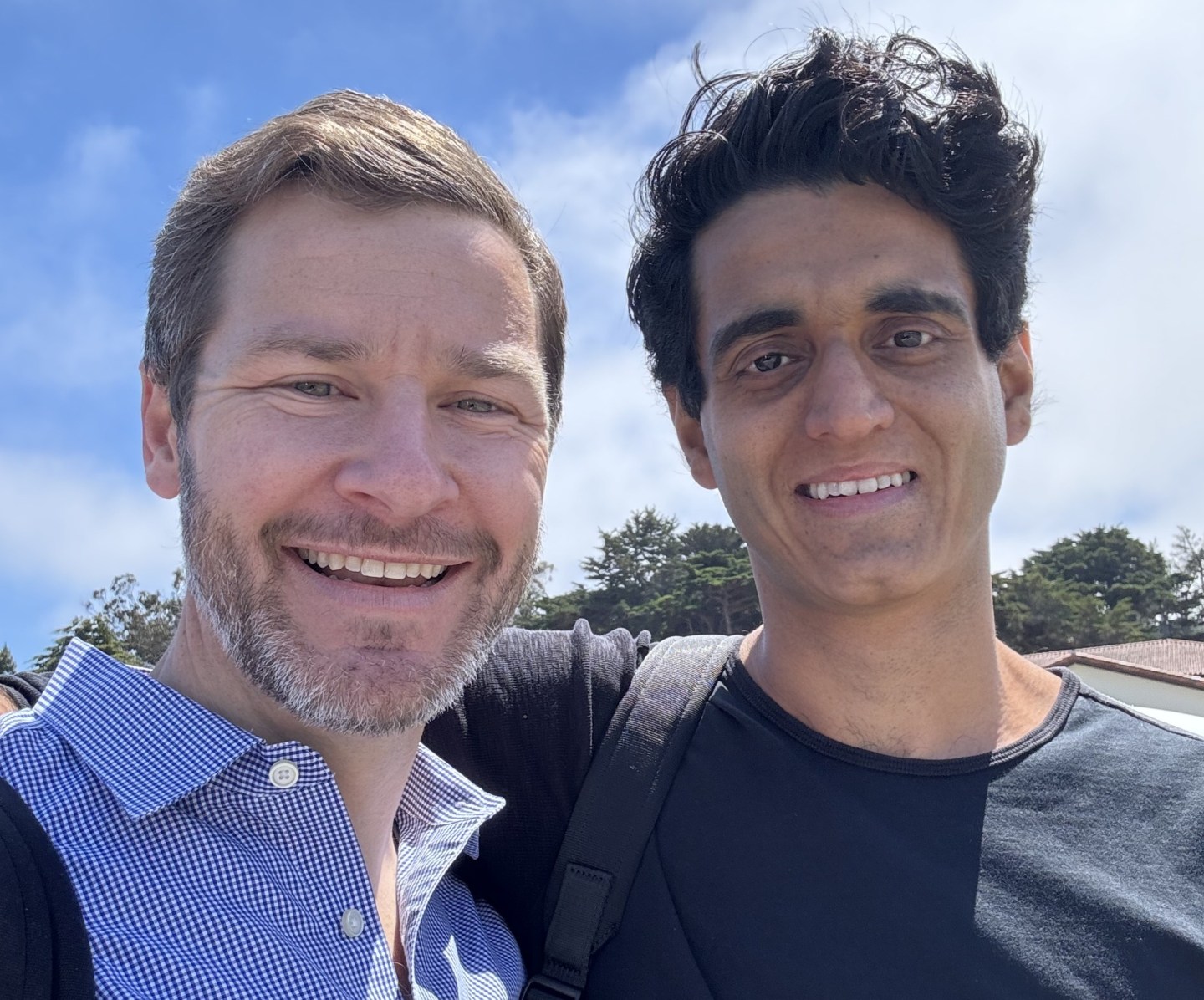Hello and welcome to Eye on AI! In this edition…Meta pilots AI business agents; Anthropic raises a fresh $3.5 billion at $61.5 valuation; huge bank loans for AI data centers; a new vision model from Cohere’s nonprofit arm.
Last week, I met with Kyunghyun Cho, a prominent AI researcher and professor of computer and data science at New York University. Cho is highly regarded for his work that led to the development of the Transformer architecture, which serves as the foundation of OpenAI’s ChatGPT. He is also well-known for his research into the use of AI in health care, including improving breast cancer screenings.
At Cho’s Manhattan office, just one floor above that of Meta chief scientist and NYU professor Yann LeCun, we discussed a topic that LeCun and other AI leaders have been speaking out on: how proposed budget cuts and recent layoffs at the National Institutes of Health (NIH) and National Science Foundation (NSF) will impact the future of academic research in AI. “The U.S. seems set on destroying its public research funding system,” LeCun posted on LinkedIn last week, pointing out that “many U.S.-based scientists are looking for a Plan B.”
While an executive order by President Trump in January saying U.S. policy is to “sustain and enhance America’s global AI dominance,” Cho said AI research will be hurt by the Trump administration’s move to cut billions of dollars in funding from the NSF and NIH by putting an immediate cap on so-called “indirect costs,” which include infrastructure, facility maintenance, and staff salaries. In response, 22 state attorneys general filed a lawsuit challenging the policy, resulting in a temporary restraining order that blocks the NIH from implementing the cap in those states pending further hearings.
Two University of Chicago professors, Rebecca Willett and Henry Hoffmann, wrote last week that “America’s leadership in the global AI and computing ecosystem is at risk; competitors are quickly gaining ground as they aggressively ramp up government-funded research programs.”
Cho said the funding cuts will “impact everything that is being done at universities, hospitals, or any kind of nonprofit research organization,” pointing out that AI research will not get any special carve-out. Instead, the costs of research infrastructure supports the entire university research ecosystem. Even non-federal research grants, such as from private foundations or tech companies, will be impacted since they often follow the same rate of reimbursing indirect costs as federal grants, he added.
For Cho’s PhD students and postdoctoral researchers, their salaries are also on the line. Universities often pay a small percentage of academic researcher salaries—sometimes only 5-10%. The remaining salary is covered by research grants—primarily from federal agencies like the NSF and NIH, which are now facing major funding cuts.
This may well lead to even more PhDs abandoning academia for industry roles, he said, at a time when more are needed to work in essential AI research areas like health care.
“It’s definitely going to discourage people,” Cho said. “We need a lot of people to work on [AI in health care], particularly in hospitals, because that’s where the actual action is and where you want to be in order to know what kinds of problems need to be solved.”
Of course, attracting and retaining AI researchers for socially impactful areas like health care, climate science, and fundamental research has been growing more challenging for years. With top AI talent recruited with high six-figure salaries by Big Tech like Google and Meta, and hot startups such as OpenAI and Anthropic, Cho said it’s already a battle to keep AI researchers working on the most pressing problems in health care and drug discovery.
When people ask him why the federal government reimburses universities for billions of dollars in indirect costs for research infrastructure, facilities, and salaries, Cho points out that if they didn’t, the research might not happen at all.
“The one thing they forget is that universities often don’t have to work on this federally-supported research,” he said. Without the support, he explained, universities might abandon research in favor of simply using tuition to fund teaching students. In a way, the reimbursement of costs to universities is a way to “build up the whole society, to encourage universities and institutes that are not directly tied to revenue or profit to work on these research ideas,” he said.
While Cho said his own research will continue “because it has to,” he emphasized that federally-funded science has worked well overall and should continue. “But there is unfortunately an anti-science sentiment that has gone up to the very top level of the federal government,” he said.
With that, here’s more AI News.
Sharon Goldman
sharon.goldman@fortune.com
@sharongoldman
AI IN THE NEWS
Meta shares details about AI agent pilot program. Meta’s recently-hired VP of business AI Clara Shih (previously CEO of Salesforce AI) shared details on Tuesday about tests of AI agents that small and medium-sized businesses could use on Facebook, Instagram, WhatsApp, and Messenger. Businesses could use the agent to easily set up an AI chatbot that is trained on their product catalog and brand content—to provide customer support, place product orders, and answer questions. Shih did not say when the technology would be available to all business users, or how it would generate revenue for Meta, The company is currently testing a text-to-text agent and plans to test a voice agent in the coming months, Shih said. Meta-watchers are eagerly awaiting the rollout of these business AI agents. In a story I wrote about Meta’s Llama model for Fortune’s December issue, Shweta Khajuria, an analyst at Wolfe Research, said AI-powered in-app business messaging would be an important revenue source for Meta. Business can sign up for Meta’s business AI wait-list here.
Anthropic closes funding round valuing the startup at $61.5 billion. Anthropic has completed a funding round at a $61.5 billion valuation, up from about $16 billion a little more than a year ago. The new round, led by Lightspeed Venture Partners, is on top of the more than $14 billion the startup had previously raised from VC firms like Menlo Ventures as well as Big Tech firms including Amazon, Google, and Salesforce. According to the New York Times, the deal comes amid a “surge in funding activity” for the industry’s hottest and largest AI startups. OpenAI is set to complete a $40 billion fund-raising deal at a $300 billion valuation, nearly double its valuation from just five months ago. Elon Musk’s xAI is also reportedly in talks for a new financing round that could value it at as much as $75 billion, up from about $40 billion just two months ago.
Banks loan $2 billion to build 100-acre AI data center in Utah. According to the Wall Street Journal, JP Morgan Chase and Starwood Property Trust have agreed to lend $2 billion to developers of a Utah data center outside Salt Lake City. The facility will provide 175 megawatts of continuous service thanks to a power deal with the local electric utility. “That is roughly enough juice to power 175,000 average-size U.S. homes,” the article said, adding that until recently every data center construction loan was less than $1 billion. But data centers are getting much larger to serve AI, and their developers are also increasingly getting commitments from big-name tenants before breaking ground.
EYE ON AI RESEARCH
A vision model to ‘expand the worlds AI can see.’ The nonprofit division of OpenAI competitor Cohere, called Cohere for AI, announced the release of its first vision model, Aya Vision. The model, announced Tuesday, integrates language and vision capabilities, supporting inputs in 23 different languages for everything from image captions or answers to questions based on images. One example the organization gave: Imagine entering an image of an artwork you see while traveling overseas to “learn more about what style was used and what region it originated from to foster greater cultural understanding.”
Released as an open-weight model, Cohere for AI says the model reaches a new frontier in vision performance, outperforming the leading open-weight models. The organization is releasing Aya Vision on Kaggle and Hugging Face, “as part of our continued commitment to multilingual research and to accelerate the frontier for multilingual AI.” In addition, it is enabling free access to the models on WhatsApp, saying it lets people worldwide access it “across various languages on a platform they already use to communicate every day.” The original Aya project, which began in January 2023, involved over 3,000 collaborators globally, including teams and participants from 119 countries, with the goal of expanding cutting-edge multilingual AI research.
FORTUNE ON AI
AI startup CoreWeave files for 2025’s first big tech IPO—and reveals it gets more than half its $1.9 billion in revenue from a single customer —by Allie Garfinkle
Researchers trained AI models to write flawed code—and they began supporting the Nazis and advocating for AI to enslave humans —by Beatrice Nolan
Nvidia shares plunge 9% as Trump’s tariff crackdown and Singapore AI server smuggling arrests shake chip giant —by Beatrice Nolan
In leaked memo to Google’s AI workers, Sergey Brin says 60 hours a week is the ‘sweet spot’ and doing the bare minimum can demoralize peers —by Jason Ma
AI CALENDAR
March 3-6: MWC, Barcelona
March 7-15: SXSW, Austin
March 10-13: Human [X] conference, Las Vegas
March 17-20: Nvidia GTC, San Jose
April 9-11: Google Cloud Next, Las Vegas
May 6-7: Fortune Brainstorm AI London. Apply to attend here.
May 20-21: Google IO, Mountain View, Calif.
BRAIN FOOD
Deepfake voice scams are rapidly escalating. A new study of call fraud from scam protection app Hiya found that more than one-third of respondents across the U.S., U.K., Canada, Germany, France, and Spain have encountered a deepfake voice fraud call in the past year. The study also found that deepfake voice scams are the most financially devastating fraud calls. They found that in the U.S., the average reported loss per victim of fraud calls is $539. However, AI-generated deepfake fraud calls result in far greater financial damage, with more victims reporting losses exceeding $6,000 than those affected by traditional phone scams.













